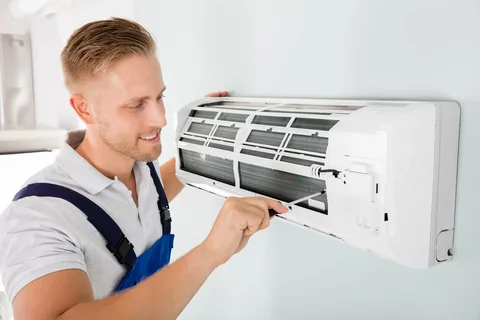Your HVAC system heats and cools your home and can include air conditioners, heat pumps, furnaces, ductwork, and thermostats. An HVAC failure can be serious because the system controls year-round comfort levels and helps remove pollutants from the air. Unfortunately, repairing and replacing components can be expensive and create a financial strain. A home warranty that includes HVAC coverage offers protection from these unexpected costs.
Aging Systems Can Suddenly Fail
Buyers who choose older homes face the possibility that HVAC systems can fail anytime, especially if they are over five years old. That can lead to a crisis since buying a home requires a substantial cash outlay, often leaving owners on a tight budget. A home warranty safeguards owners from these catastrophic expenses. It’s much easier to budget for a warranty premium and deductibles.
A warranty can also make sense if you’ve lived in your home a while and have an aging HVAC system. Warranty terms require that covered systems are well-maintained, so purchasing a policy not only helps defray repair or replacement costs but ensures you are protecting your HVAC system. That’s crucial since maintenance helps extend the life of components.
Homeowner’s Insurance Isn’t Enough
If you have adequate homeowner’s insurance, you might wonder why you would need a home warranty once the manufacturer’s warranty on your HVAC system expires. The reason is that a warranty provides different coverage than insurance. Progressive Insurance states, “If your air conditioner is damaged or destroyed due to a covered peril, such as lightning or a windstorm, your homeowner’s insurance policy may pay to repair or replace the unit, up to your coverage limit and minus your insurance deductible. Your policy won’t cover damage due to wear and tear—although a home warranty plan may.”
A home warranty renews annually. But, even several years’ premiums can be a bargain compared to the high cost of professional HVAC service. Warranties generally cost a few hundred dollars to over $1,000 annually, while HVAC companies can charge several hundred dollars for a single repair. Replacing units could easily run $5,000 or more.
There Are Various Coverage Options
Per Bob Vila, a home warranty covers issues caused by everyday usage as well as age-related failure. The specific systems covered in your policy depend on the plan. Providers generally offer appliance, system, and combo plans. The system and combo plans typically include HVAC.
It’s essential to review each plan you are considering to determine precisely which HVAC components are covered. Policies generally include heating systems, central air conditioning units, water heaters, and certain wall heaters. The best warranties also cover thermostats, pipes, and ductwork. Policies typically do not include window air conditioners.
Arranging Service Is Easy
A top-notch home warranty provider offers excellent customer service and makes it easy for customers to schedule service. Most warranty companies use a network of trusted professional service providers, so clients don’t have to shop around. Scheduling work is straightforward.
When your system breaks down, you phone a number listed in your policy, and a representative makes an appointment for a technician to inspect your system. They will send their findings to the warranty company, which approves covered charges. Once you pay the deductible, a technician proceeds with repair or replacement.
It’s a convenient service for homeowners who are new to an area and don’t know any service professionals. Technicians are well-trained and licensed and guarantee the quality of their work.
Buying a home warranty to cover your HVAC system makes sense. HVAC repair or replacement is expensive, and a warranty can cover unexpected system failures and ensure efficient repairs or replacement. It’s a wise investment since a warranty premium and the cost of deductibles is far less than you would pay without coverage.





